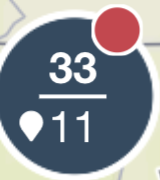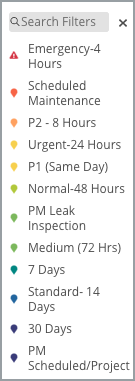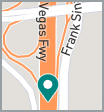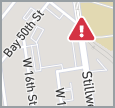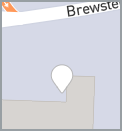- Created by Chellie Esters , last modified on Mar 21, 2023
You are viewing an old version of this content. View the current version.
Compare with Current View Version History
« Previous Version 90 Current »
The Work Order Map View is an intuitive, visual experience geared towards helping you view and manage locations and corresponding work orders on a map.
In this visualization you can see:
- the volume of work orders for locations and geographical regions;
- the areas where work orders are open, based on Priority; and
- the areas where emergency work orders are prevalent.
You can also create a service request and export a count of work orders for each Location/Priority.
You will only view and create service requests for the locations to which you have access.
Users permissioned to use the Weather Overlay can also see which locations are in the line of sight of local weather events and alerts. See Viewing Weather Events in the Work Order Map View for more information.
- Click Work Orders on the top navigation bar.
- On the top-right of the page, click the Map icon.

You will see the Work Order Map View.
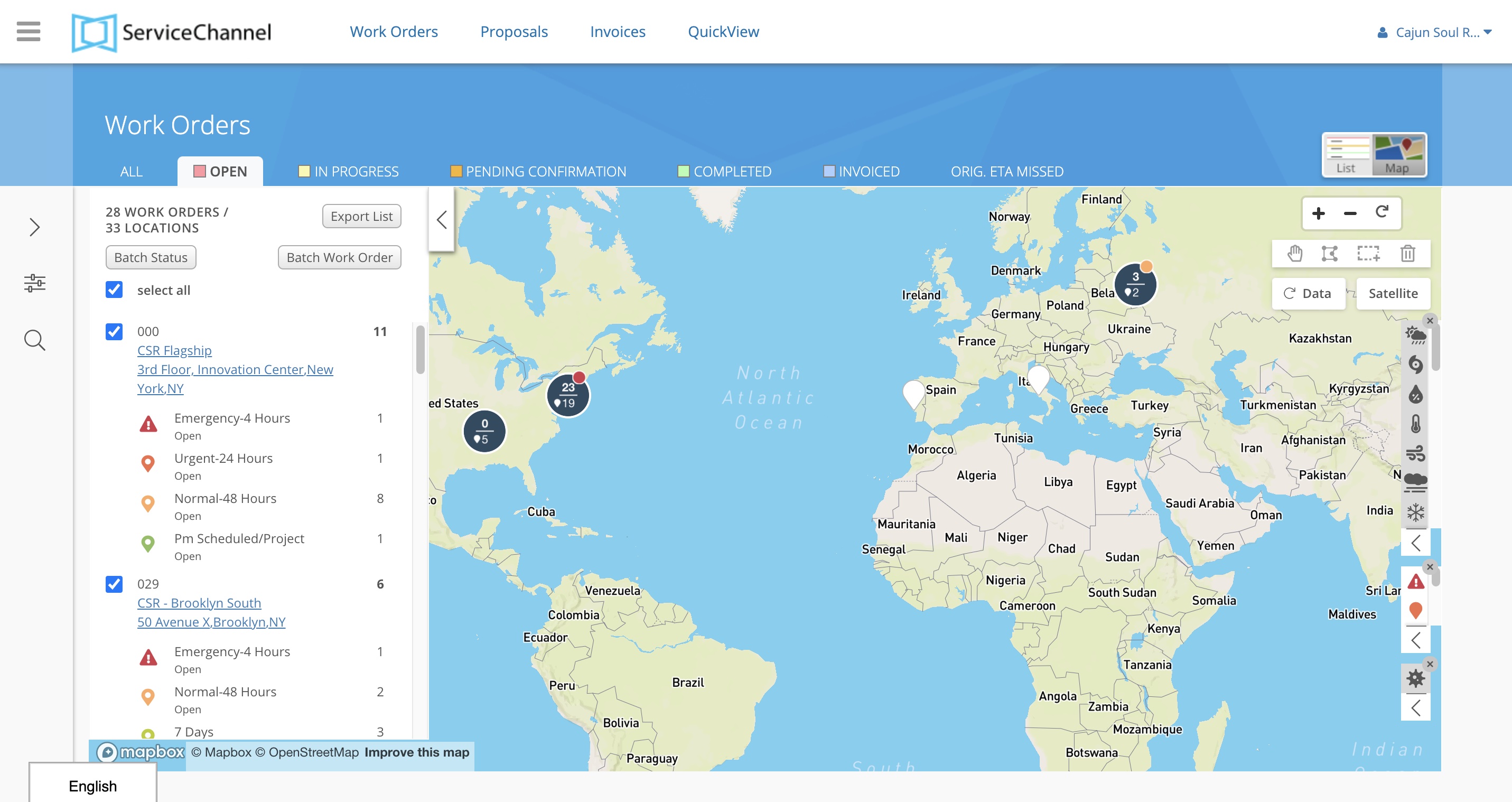
The Map View takes the filters set in the Work Order Filter panel and the Work Order Tabs into account. For example, adjusting the Call Date range in the filter panel or selecting the In Progress tab on the top of the Work Orders page adjusts the data on the Map View.
Adjust these filters as needed, or select Clear All Filters to reset to the default.
Once your desired Work Order Filters are set, collapse the panel for a wider map view. Expand the panel to access the filters when you need to hone in on the data.

Identifying Icons in Map View
On the Map View, locations are colorized based on work order Priority and Status, as configured in Service Automation Admin.
The following icons represent locations and work orders:
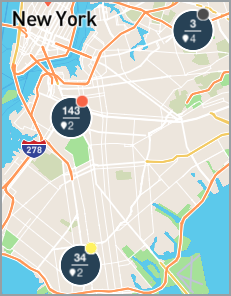 | Circles and Circle Colors A circle with a number inside represents a cluster of locations and Open/In Progress work orders within that geographical area. Let's look closer at an example: Example Location Indicator
|
Example of Priorities
| Priority Colors The circle colors are determined as follows:
|
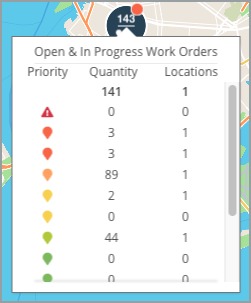 | Location Data Hovering over a location or location cluster gives you the Locations modal where you can see
Those permissioned to see weather events will also see current conditions when hovering over a single location.
|
| Zooming In on the Map When you zoom in to see a single location, you will see the highest priority as the GPS pin. A red triangle with an exclamation mark represents an emergency work order being the highest priority for that location. A white GPS pin indicates no Open or In Progress work orders for that location. |
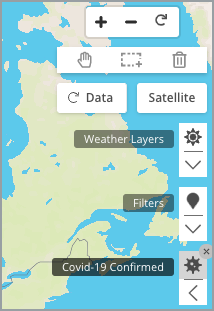 | Additional Overlays Alongside Filters, which are the Priorities, you may also have additional overlays such as weather-related events. |
Using the Map View Filters Panel to View Locations and Work Order Data
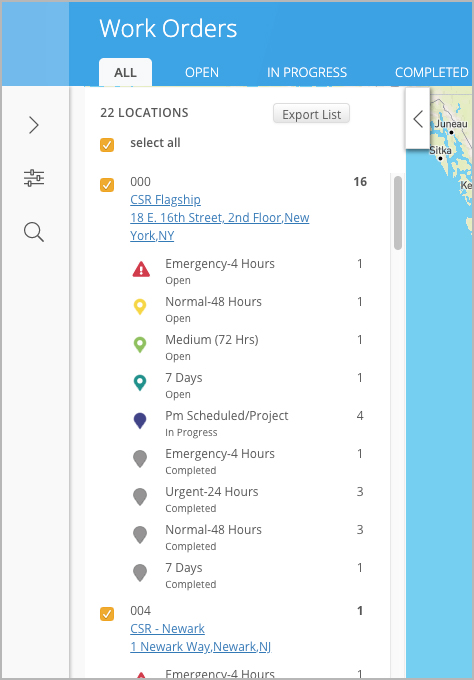
Adjacent to the Work Order filters are Map View filters panel which show
- the list of locations,
- the total number of work orders, and
- the number of work orders per Priority and Status.
From here, you can also export the list of locations and work orders under each Priority. See Exporting the Locations/Priorities List from the Map View for more information.
In the Map View filters panel, work orders in the Open or In Progress statuses are colorized, while Completed work orders are in grey.
Work orders in the Completed/Pending Confirmation status appear in grey in Map View. Should a work order be marked as "Unsatisfactory," it will return to the In Progress status and reappear on the map.
You can also use the work order filters to hone in on data. Expand the Work Orders filters panel to select criteria or saved filters.
By default, all locations appear on the map, including closed locations. To hide specific locations, uncheck the box next to each undesired location.
If you see a location with 0,0 coordinates, please check in the location module to put in the right latitude and longitude. Learn more about Managing Locations.
Filtering Work Order Count
Applying the Work Order Count allows you to filter and then view locations where the work orders count of 0 (zero) or greater than one. This will help determine if certain locations potentially require specific types of work orders have been submitted or not. For instance, you may want to know which locations have snow plow work orders and which locations do not.
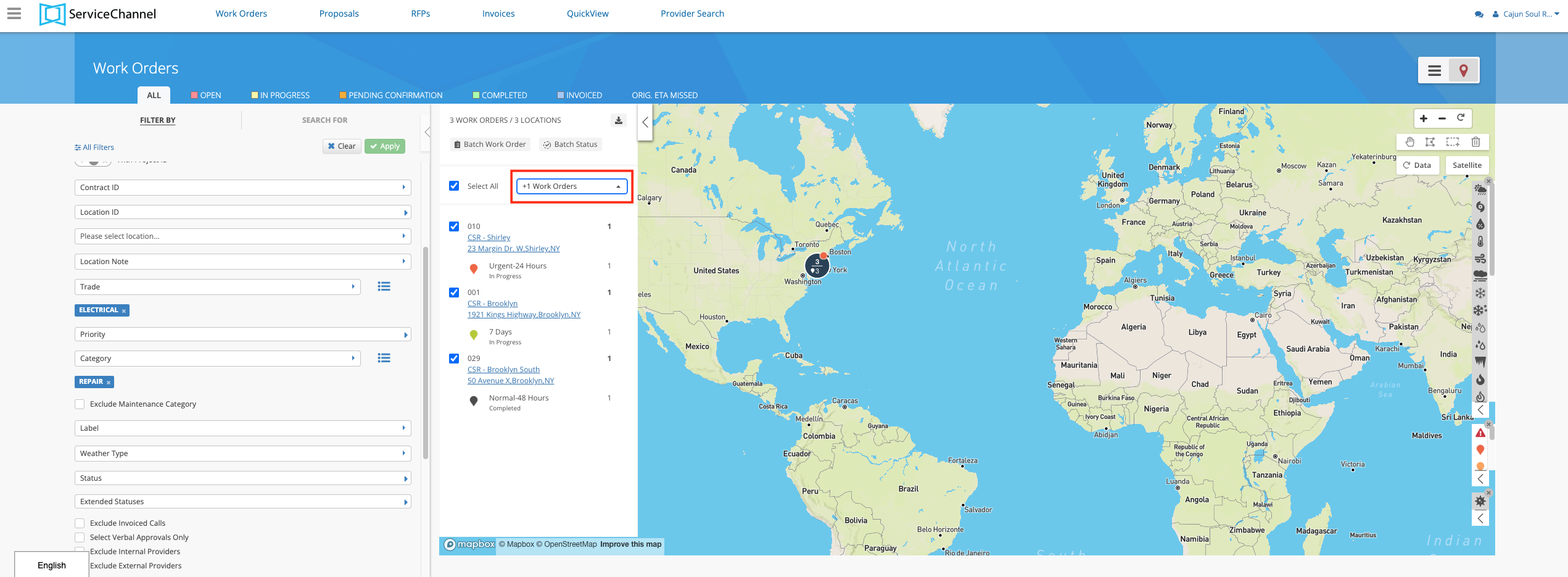
Zooming into the Map to Review Work Order Data for a Location
Clicking a Location Name will zoom the map into that Location so you can drill down into the work orders for that Location. From here you can:
- hover over a location to see location details
- view the list of Priorities and the number of work orders in that Priority;
- view the list of Tracking Numbers for each Priority, along with the work order Status and Trade; and
- create a Service Request for the chosen Location.
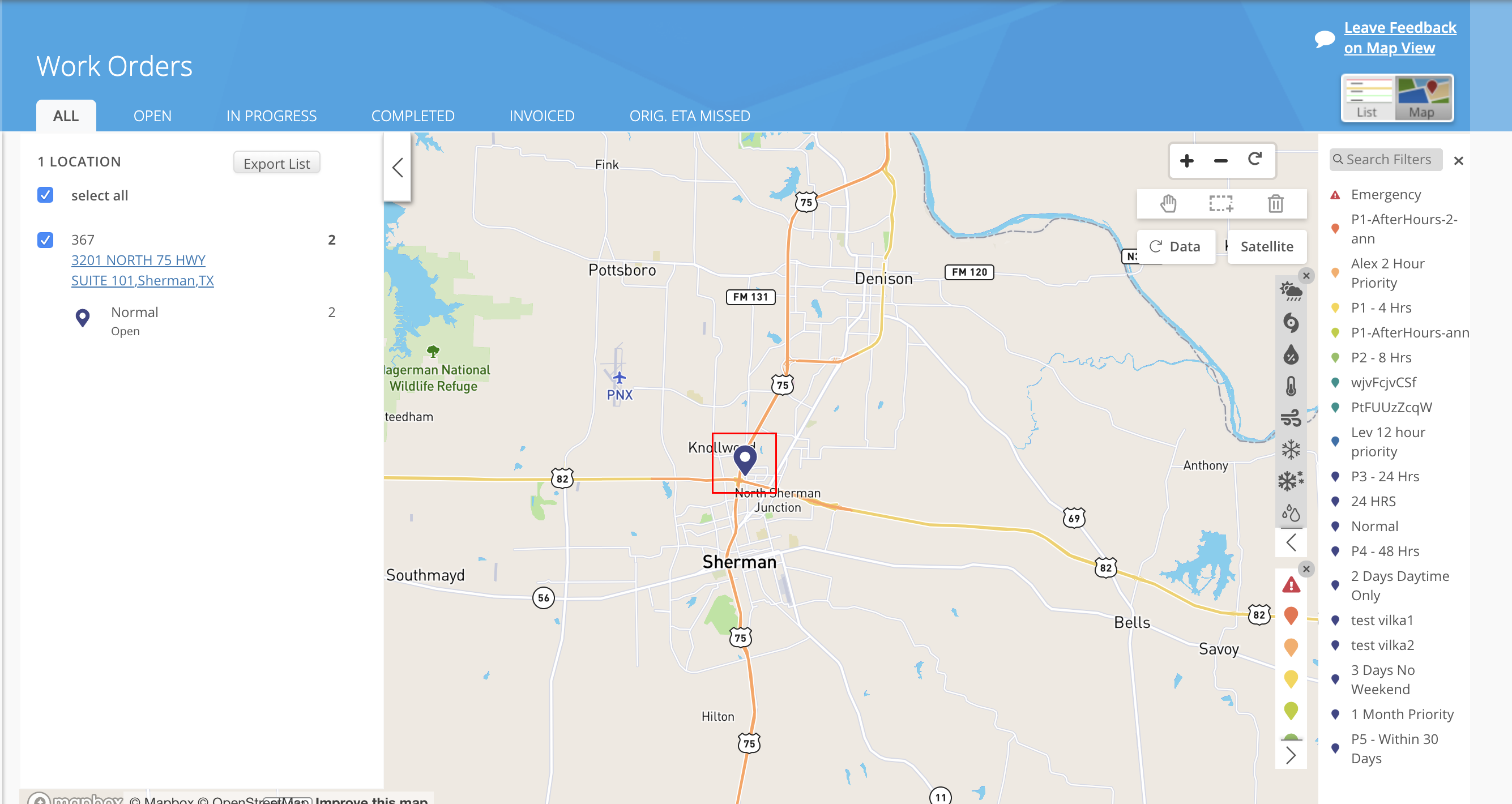 Clicking a Tracking Number will take you to the Work Order Details page. See About the Work Orders Details View for more information on reviewing work orders in this view.
Clicking a Tracking Number will take you to the Work Order Details page. See About the Work Orders Details View for more information on reviewing work orders in this view.
Entering a Service Request from the Map View
You can enter a service request for either a single location or for multiple locations from the map view.
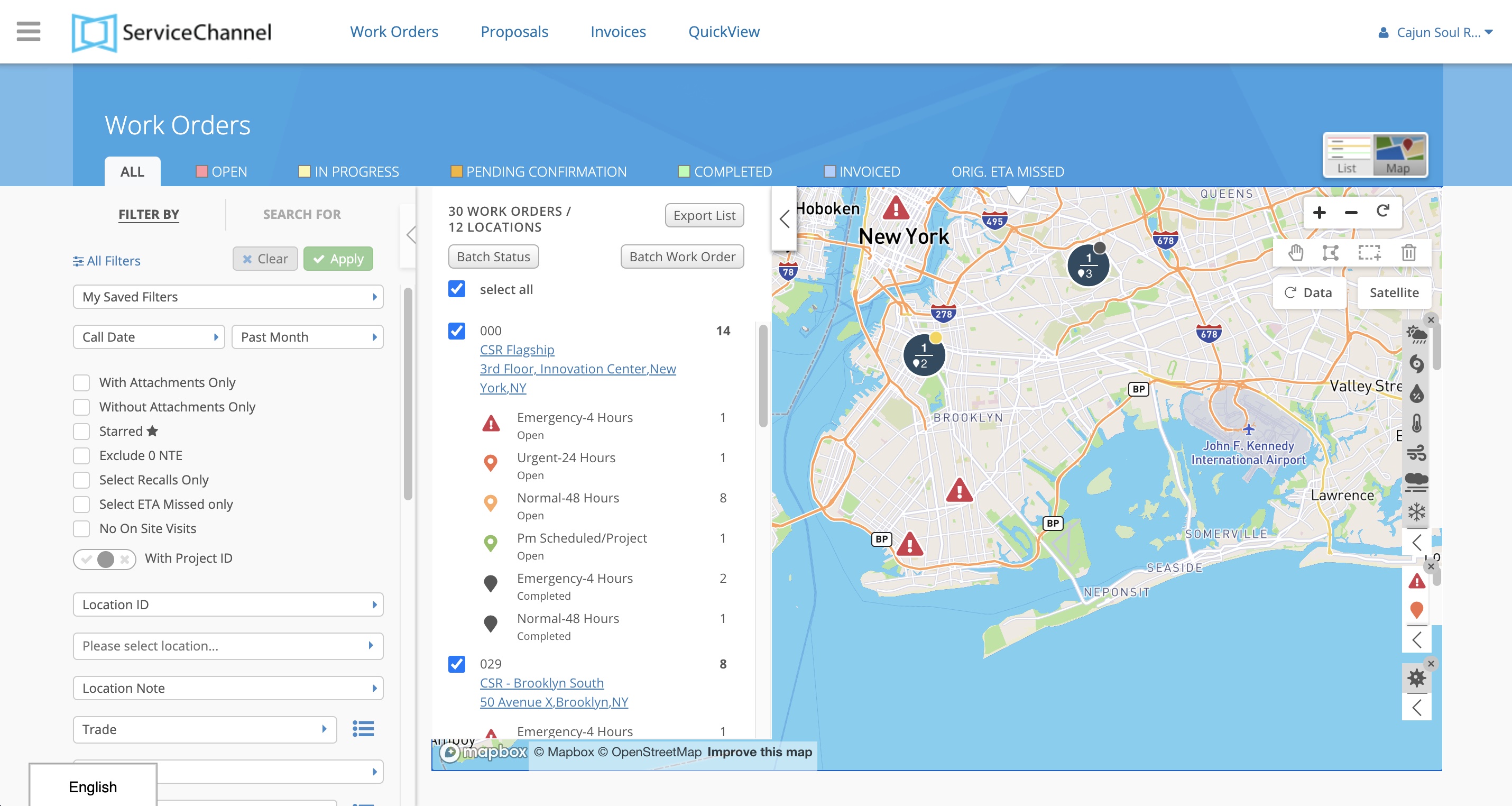
Exporting the Locations/Priorities List from the Map View
In the Map View filters panel, you can export the list of selected Locations into a *.CSV file. Here, you will have a matrix of locations with each Priority as a separate line item. For each Priority, a total count of work orders per Priority is listed.
- From the Map View filter, check the box(es) next to the desired Location(s) and then click Export List.
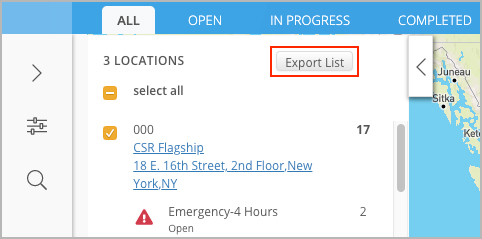
- Follow your device's methods to name and Save the file.
- Open the file to review the data.

Using Additional Map View Tools
To the right of the map, you will find robust navigation and tools to help you hone in on the data you need to see.
You can also use your mouse to quickly zoom and move the map.
- Toggle tools: On the top of the page, toggle between the Work Order List View and the Map View.
- Zoom tools: Use the plus icon to zoom into the map, and the minus icon to zoom out. Use the refresh icon to reset and center the map.
- Using a mouse: use the scroll mechanisms to zoom in and out.
Drawing tools: Use the shapes icons to freestyle draw and select locations. Use the hand to select and move the drawing shapes. Use the trash can to delete the shapes off the map.
- Use the Data button to manually refresh work order data. (Note that weather data automatically refreshes.)
- By default, the map is in Street view. Click Satellite to change the map view. This button will change to Street, where you can toggle between Street view and Satellite view as needed.
- Under the Priority list, toggle Show Locations to show and hide locations on the map. (This is beneficial when using Weather Overlay.) Click any Priority to hide it on the map. Click it again to toggle it on.
- Click a Priority to hide it from the map. Click it again to toggle it on.
- No labels
